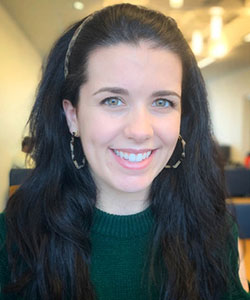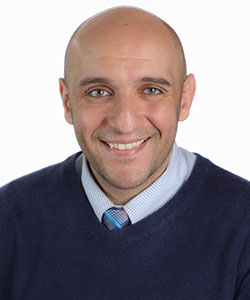The old nomenclature we have for drugs used for mental health conditions may hinder patients’ understanding of their medication, say Kaleen N Hayes and Mina Tadrous
Drug class nomenclature has little consistency. Class names can originate from characteristics, indications, or effects of drugs, or they may even be coined by manufacturers to differentiate products for marketing purposes (for example, antimuscarinics versus anticholinergics). As clinicians, we deftly cruise between generalised classes (analgesics), mechanistic groupings (calcium channel blockers), or lay terms (statins) without a second thought. However, the changing mores of modern practice mean that we need to start more actively appreciating the language we use around drugs and diseases, particularly when speaking with patients.
Greater attention to the nuances of our language in medicine has already brought about change. For example, the patient centred language movement has advocated for the separation of people from their diagnosed conditions (a person living with diabetes versus a diabetic); updated diagnostic codes reflect new understanding of diseases while avoiding negative semantics (alcohol use disorder versus alcoholism); and medication regimens are “drug therapies” rather than just drugs (undergoing bisphosphonate therapy versus “taking bisphosphonates”).
Naturally, it seems like the next step in the modernisation of clinical jargon to separate drug classes from indications, especially when there is entrenched stigma associated with the drugs or indications have expanded beyond the original use. This separation has been adopted for some therapeutics, as phrases like “antidiabetic drug” have fallen out of fashion.
However, nowhere does this issue persist more than with the drugs used for mental health conditions, where drug class names like “antipsychotics” and “antidepressants” are routinely used. These older class names grow even more outdated as approved and “off-label” uses for the medications expand, and new drugs with different mechanisms enter the market. More importantly, in our experience as pharmacists, the use of these drug class names often introduces confusion and shame during patient counselling (“My doctor told me this new medication is for depression. Why would he start me on an antipsychotic?”).
The problematic nomenclature of psychopharmacological therapies is not a new concept. It’s been identified anecdotally, quantified through practitioner surveys, and agreed upon through robust multi-organisational taskforces. These efforts have resulted in new, comprehensive nomenclature systems, which avoid references to indications altogether. Calls to action to implement these new systems in journals and drug class indices have been iterated for years. Yet despite these well received proposals, we as clinicians tend to still use drug class names like “antipsychotic” in clinical practice and research. Why do we continue to recognise the issue, but wait for the implementation of new systems to change how we refer to drugs in practice?
Rather than overhaul classification systems that are rarely used in clinical settings, like the World Health Organization’s Anatomic Therapeutic Chemical Index, we’d suggest that there is a simpler solution. Clinicians can immediately avoid using indication based drug class names like “antipsychotic” and “antidepressant” in favour of pharmacological, mechanistic groupings of drugs.
For clinicians who want to refer to comprehensive neuropsychopharmacological nomenclature, we recommend the system developed by Zohar et al. However, we’d advocate for a simplified version of this drug class system when communicating with patients, which allows clinicians to modify pharmacological terms at their discretion. For example, to a practitioner, vilazodone is a serotonin partial agonist reuptake inhibitor, but to a patient, we may refer to it as a partial serotonin blocker or serotonin regulator. Likewise, quetiapine is a serotonin and dopamine receptor antagonist, or, more simply, a combination serotonin/dopamine blocker.
We understand that there may be concerns this system would lead to oversimplification (for example, by focusing only on dopaminergic effects) or overcomplication (it could lead to listing every neurotransmitter affected) of groupings. Some clinicians may also worry that focusing on pharmacology will confuse patients more than the use of terms like “antipsychotic” would. To this, we argue that the oversimplification of a drug’s effects already occurs across other common drug classes, like statins, which have a range of pleiotropic cardiovascular effects but generally are still referred to as lipid lowering drugs.
We would also highlight that clinicians are already able to use patient friendly pharmacological nomenclature. For example, we may refer to beta-receptor antagonists as “beta blockers” during patient counselling or explain that anti-allergy medications block histamine to alleviate symptoms. Despite these points, we recognise the aforementioned challenges that accompany this approach. However, we believe that they are outweighed by their benefits of clarifying drug effects to facilitate patient understanding and shared decision making, and avoiding judgment laden (and, frequently, inapplicable) terms like “antipsychotic.”
In the era of person centred medicine, we often emphasise the importance of clinical judgment to help make decisions. In an extension of this concept, we advocate for clinical judgment when choosing our language as well—particularly when we refer to drugs and drug classes. The old nomenclature we have for drugs used for mental health conditions may hinder patients’ understanding of their medication regimens and, in our experience, needlessly perpetuates stigma. Why tell a person that they’re initiating olanzapine, an antipsychotic which can be used for depression, when we can say their new medication is a dopamine blocker and works with other medications to help with their depression? After all, references to neurotransmitters like serotonin are now commonplace in popular music and culture.
Clinical practice must iteratively adapt and modernise to meet the needs of our patients; attention to language—in this case, the medication “name game”—is one small effort to do so.

Kaleen N Hayes is a pharmacist and PhD candidate at the University of Toronto Dalla Lana School of Public Health, specialising in pharmacoepidemiology. Twitter @pharmepi
Competing interests: None declared.

Mina Tadrous is a scientist at the Women’s College Hospital Institute for Health System Solutions & Virtual Care. He is also an assistant professor at the Leslie Dan Faculty of Pharmacy at the University of Toronto, investigator with the Ontario Drug Policy Research Network (ODPRN), and ICES adjunct scientist. Twitter @Mina__T
Competing interests: None declared.
